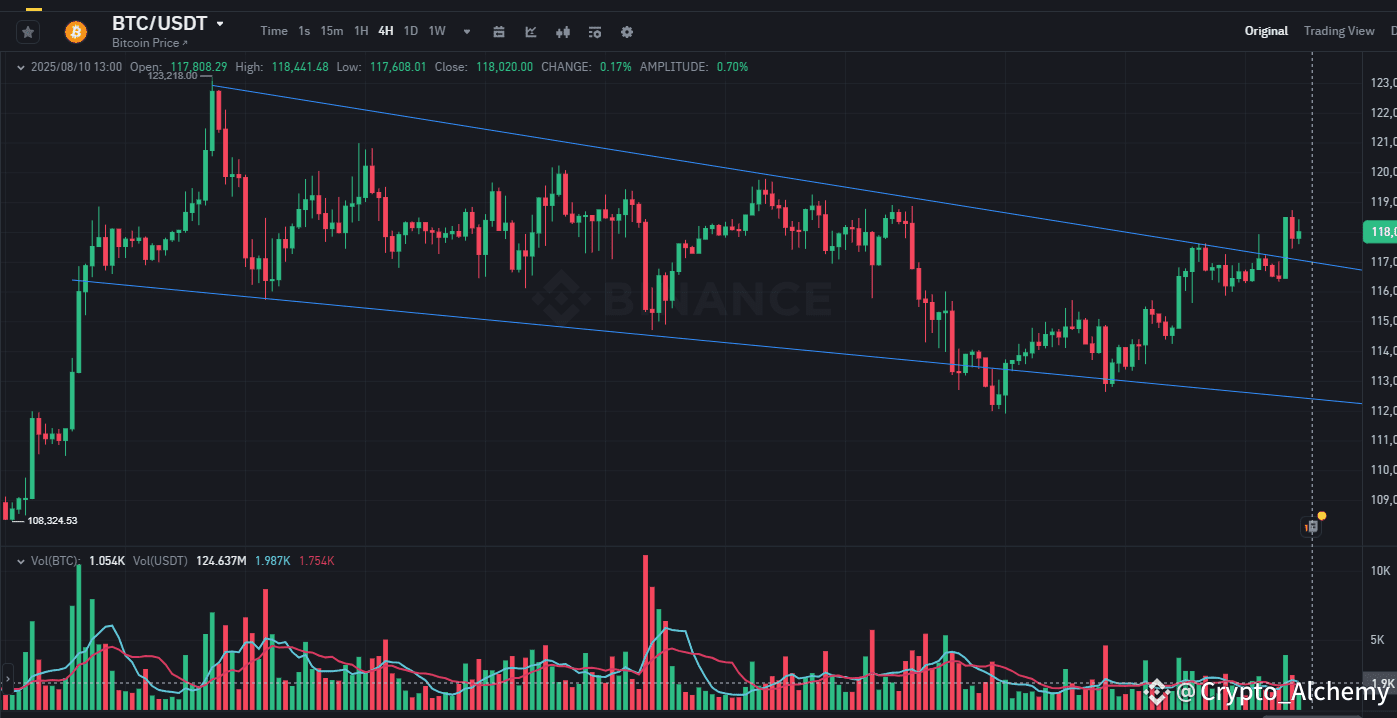The slight dip in Bitcoin's 24-hour trading volume, despite its price stability, is an interesting point. While it could suggest a temporary lull in aggressive buying or selling, it might also indicate that a significant portion of the market is holding onto their Bitcoin, anticipating further price appreciation. This 'hodling' behavior, especially among long-term holders, contributes to price stability and can reduce volatility. The fact that the number of sub-100 BTC wallets has surpassed new supply levels further supports this idea of sustained demand across a diverse investor base, not just the large institutional players .
This broad-based accumulation is a healthy sign for Bitcoin's long-term outlook, as it suggests a growing conviction among smaller investors.
Regarding the technical analysis, the concept of a 'Golden Fibonacci retracement level' is quite significant. For those unfamiliar, Fibonacci retracement levels are horizontal lines that indicate where support and resistance are likely to occur. They are derived from the Fibonacci sequence, a series of numbers where each number is the sum of the two preceding ones. When Bitcoin bounces off such a level, especially after a significant price movement, it's often interpreted as a strong signal of a trend continuation. The mention of a 'Golden Fibonacci pocket' further emphasizes the strength of this support, as it implies a cluster of these important levels, making it a robust area for price reversal or consolidation .
The 'Value Area High (VAH)' is another key technical term, representing the upper boundary of the price range where the majority of trading volume has occurred. When price breaks above the VAH, it suggests that buyers are in control and are willing to pay higher prices, indicating a bullish sentiment. The 'liquidity cluster where short-sellers' stop-losses are located' is a crucial detail. When price approaches such an area, it can trigger a cascade of short covering, where short-sellers buy back their positions to limit losses, further fueling the upward price movement. This is often referred to as a 'short squeeze' and can lead to rapid price increases .
The short-term bearish signals, such as 'bearish absorption on the CVD indicator' and a 'double-top pattern on the stochastic oscillator,' are important to acknowledge. The CVD (Cumulative Volume Delta) indicator measures the difference between buying and selling pressure. Bearish absorption on the CVD suggests that selling pressure is temporarily outweighing buying pressure, even if the price isn't immediately reflecting it.
A double-top pattern on the stochastic oscillator, a momentum indicator, often signals a potential reversal in an uptrend. These indicators suggest that while the long-term outlook remains bullish, there might be some short-term profit-taking or minor corrections before the next major leg up . This kind of detailed technical analysis provides a more nuanced understanding of Bitcoin's immediate future, highlighting potential areas of caution within an overall optimistic trend.
Let's circle back to Bitcoin's dominance and the rise of altcoins. The shift we're seeing, where altcoins like XRP and Dogecoin are gaining traction due to their 'utility-driven appeal,' is a significant evolution in the crypto market .
For a long time, many altcoins were seen as speculative assets, but now, projects that offer tangible solutions or have real-world applications are attracting more serious investment. This maturation of the altcoin market is a healthy sign for the entire crypto ecosystem, as it moves beyond pure speculation towards value creation. The institutional capital flowing into Ethereum ETFs, as highlighted by Ainvest, further validates this trend. It shows that large financial institutions are not just interested in Bitcoin but are also recognizing the potential of other blockchain networks and their native cryptocurrencies
This diversification of institutional interest is a positive development, as it spreads the investment across a broader range of assets, potentially leading to a more stable and mature market overall.
The BRICS nations' exploration of blockchain-based payment systems is a geopolitical development with profound implications. If these nations, representing a significant portion of the global economy, were to adopt a unified digital currency or even a common blockchain framework, it could fundamentally alter the global financial landscape. While there are challenges, such as fragmented regulatory approaches and China's influence, the sheer scale of this initiative could drive massive adoption of blockchain technology and potentially challenge the dominance of traditional financial systems
This doesn't necessarily mean a direct competition with Bitcoin, but rather a parallel evolution where blockchain technology becomes more integrated into global commerce and finance. The increased mainstream awareness and legitimacy that could result from such initiatives would undoubtedly benefit the entire crypto industry, including Bitcoin.
In essence, the narrative of the past 24 hours for Bitcoin is one of underlying strength and resilience, even amidst a slight rebalancing of market dominance towards altcoins. The technical indicators suggest continued bullish momentum, with key support levels holding firm. The growing institutional interest, coupled with the maturation of the altcoin market and significant geopolitical developments, paints a picture of a rapidly evolving and increasingly sophisticated cryptocurrency landscape. Bitcoin remains the foundational asset, but the ecosystem around it is expanding and diversifying in exciting ways. This ongoing evolution is what makes the crypto space so captivating and full of potential.

